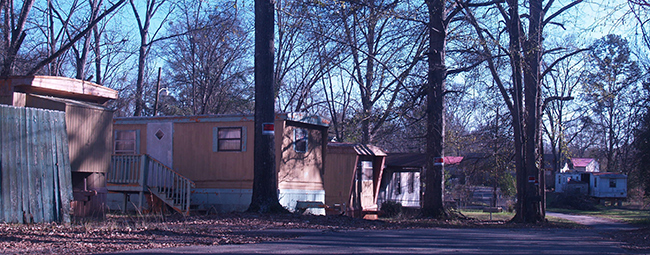Habitat for Humanity International Summit Shines Spotlight on Baldwin County
Print This Post
by Diana St. Lifer More than 160 people from throughout the northeast had an opportunity to see how a once-thriving Baldwin County neighborhood that fell victim to the economic downfall has banned together in a revitalization effort that has gained national attention. When Habitat for Humanity International (HFHI) was planning its 2016 Affiliate Summits, one of its goals was to host a summit in a rural location to illustrate how big things can happen in a small community where resources are scarce but enthusiasm is high. With more than 1,400 affiliates in the United States, HFHI looked for a place in the east with a population of less than 50,000 that would provide a sharp contrast to the backdrop of the two other summit locations—Milwaukee, WI and Portland, OR. They found everything they were looking for in Milledgeville, Baldwin County, where revitalization of the historic Harrisburg neighborhood is a shining example of what can be accomplished when residents, local government officials, businesses, and community partners work together toward a common goal. The neighborhood project could have easily gone off course given the significant challenges that Milledgeville faced in terms of rising unemployment, the high number of low-income households, and low education levels compared to Baldwin County as a whole. And in Harrisburg, a neighborhood located just outside the city, a closed elementary school sat abandoned for years and several state-funded programs that once employed many residents had shut down. Harrisburg’s current population of 1,625 represents a 35-percent decrease since 2000.
The residents, however, had two things to hold on to—hope and a dream. “The revitalization effort got started because a group of residents wanted a community garden,” said Janet Cavin, coordinator of Baldwin County Family Connection. The garden was built on the property of the vacant school, which subsequently was converted into a community center with an outdoor playground. At the same time the neighborhood was struggling, the future wasn’t hopeful for Habitat for Humanity Milledgeville-Baldwin County, which, after 20 years, was facing a financial crisis and potential closure. Murali Thirumal was brought in to close down the Habitat affiliate, but instead saw opportunity in a community where the residents had rallied to turn their neighborhood around. Habitat had already helped dozens of families in Harrisburg through its home building program, and now that the international group was focusing on revitalization, Thirumal, executive director of Habitat for Humanity—Milledgeville, knew even more good could be done in the neighborhood. “It was no longer about building a house for a family, but about building a community,” he said. Attendees at the Habitat Milledgeville Summit, which took place Jan. 12 – 14, learned how the community project went from a handful of residents interested in a garden to a strong neighborhood coalition dedicated to implementing a strategic plan that focuses on providing employment, educational and housing opportunities to the residents of Harrisburg. Participants also spent a day in the neighborhood meeting with residents and seeing the work that has been done to date. “One of the big takeaways was that this began as a grassroots efforts,” Cavin said. “A neighborhood revitalization needs to start with the people who live in the neighborhood. That kind of desire and hope from the residents is essential.”
“This type of project couldn’t happen without partnership,” said Cindy Edwards, program manger for Baldwin County Parks and Recreation. “We are working together for a common goal. Sure there are times we get off track, but we always go back and ask, ‘Who are we doing this for?’ We know we’re doing it for the community and that is just awesome.” Diana St. Lifer is a professional writer with more than 25 years’ experience. She holds a bachelor’s degree in communications, a post-B.A. certificate in child advocacy, and is a certified professional life coach who specializes in teen and adolescent issues.
Baldwin County was facing an unemployment rate of 16.5 percent in 2011, and Harrisburg, nearly 25 percent. It was around that time when Cavin joined Family Connection and saw firsthand how support programs for families were feeling the strain of a community in need. Telling families about the importance of exercise and eating healthy is one thing; providing opportunities for them to engage in that behavior is another. Bridging that gap between understanding and opportunity was the motivation behind Live Healthy Baldwin. This program, which began with a youth summer health camp, has grown to include community gardens, farmers markets, walking and biking trails, and school-based programs to help fight the county’s obesity crisis Read Union Recorder’s coverage of the Summit. Find out how Baldwin County was selected as the regional site for the Habitat for Humanity International 2016 Affiliate Summit. |

